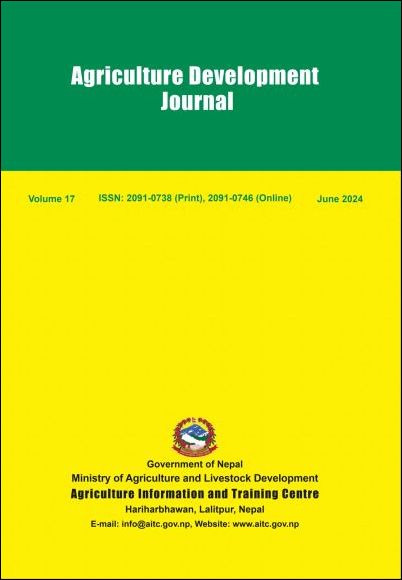Missing the Link: Stakeholders’ Perception Towards Agriculture Academic Institutions Contribution to Integrate Research Extension and Education Institutions in Nepal
DOI:
https://doi.org/10.3126/adj.v17i1.67867Keywords:
Agriculture academic institutions, Community engagement, Integration, Service learningAbstract
Currently, thirty Agriculture Academic Institutions (AAI) in two broad categories: constituent campuses and affiliated colleges under six universities are executing agriculture and veterinary science programs nationwide. All these universities have different course curricula, faculties, academic resources, and research & outreach capacities. Literature show that Nepalese AAIs have minimal activities to engage their graduates in communities and service learning. In this sense, AAIs are missing the opportunities to connect farming communities, enterprises and industries. Similarly, faculties of AAIs are mostly confined to classroom teaching and their competencies of engagement in the policy arena are under-utilized. Further, faculties and researchers because of their limited participation in policy engagement are missing the opportunities to share their evidence, expertise and experiences in the (Agriculture Research, Extension, and Education) AREE network. On this ground, a study was designed to capture the AREE stakeholders’ opinion that ‘Should academic institutions be a part of agriculture research, dissemination of technologies and policy engagement along with the teaching-learning activities?’ A cross-sectional perceptual survey was conducted (n=250) using a five-point Likert scale. Cross-tab analysis and one-way ANOVA were conducted to assess the difference in the stakeholders’ opinions. The reliability coefficient (0.633) was calculated using Cronbach alpha reliability methods. The findings showed that stakeholders perceived AAI should not be confined merely to teaching-learning activities. It means the stakeholders desire to review the existing mandates of education institutions and expand their roles in the tripartite functions of research extension and education. The stakeholders are not in favor of establishing an arrangement for the apex agency to integrate all of these institutions. To connect and strengthen linkage and integration between AREE institutions, classroom components should be connected with farming & business communities, and industries through service learning in community multi-stakeholder platforms.




